Are you a fan of strawberries? Well, who isn’t, right?
Their juicy and vibrant red flesh is enough to make one fall head over heels in love once they have them.
No matter how many you have, you will just feel like having more and more. But, have you ever wondered how many strawberries per plant each can produce?
The answer can greatly vary from one plant species to another, based on several factors. However, in general, a single strawberry plant can produce about 30 to 50 individual strawberries annually.
Seems shocking? Well, it’s a fact, and with the right knowledge, you can do it too.
Want to know the details? Keep reading to find out how to grow, maximize and harvest these beauties in abundance.
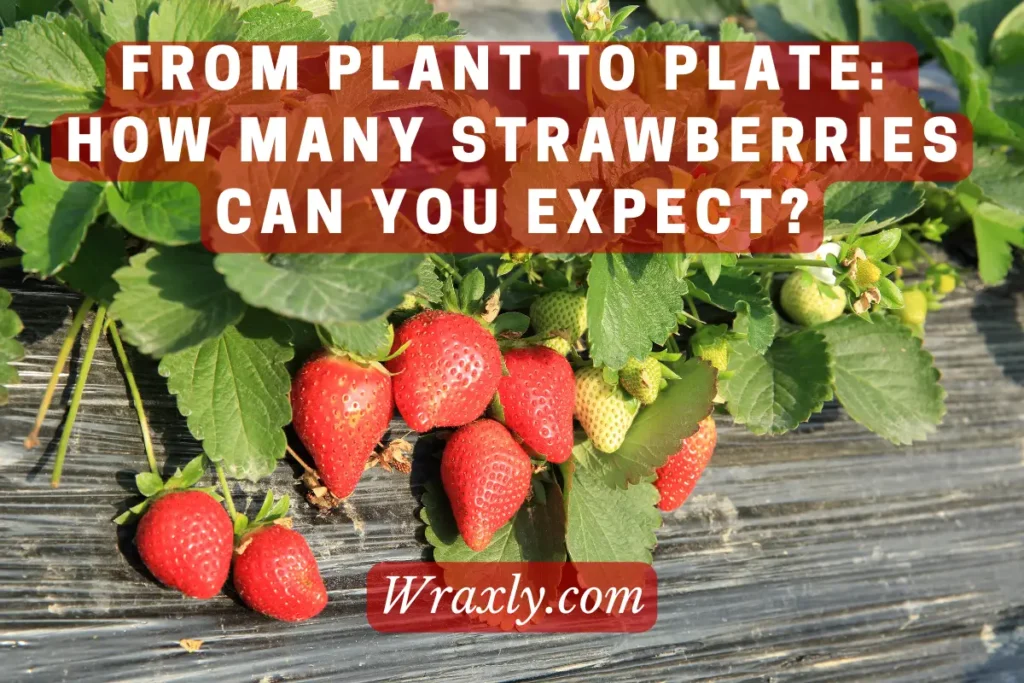
Factors Affecting Strawberry Yield
There are several factors that play an active role in affecting the strawberry yield. They are as follows:
Variety Selection
Just like any other fruit, strawberries also have different varieties, with each of them having their own unique characteristics.
That’s why it’s crucial to select the right kind of plant species because, in the end, this decision will make all the difference in your total yield. For instance, some species are more resilient to diseases and pests, while others might be well-suited for tolerating various climates or soil conditions.
Therefore, before you go ahead with the process, it’s better to do your own research and find a variety that will suit and thrive in your locality.
After all, you wouldn’t want to grow a species that would go to waste simply because it doesn’t suit your region’s environment. So, make sure to pick the right variety of plants to get that desired juicy strawberries yield you are long dreaming of!
Pineberries
Oh, let’s talk about pineberries – the delightful strawberry hybrids that are a blend of Fragaria chiloensis (the Chilean/beach/coastal strawberry) and Fragaria virginiana (the Virginia/mountain/wild strawberry). These little gems are like a unique twist on the regular strawberries we know and love.
Picture this: small, rounded, and conical just like their strawberry cousins, but what makes them truly stand out is their creamy white skin with those adorable red seeds peeking through. Talk about a showstopper!
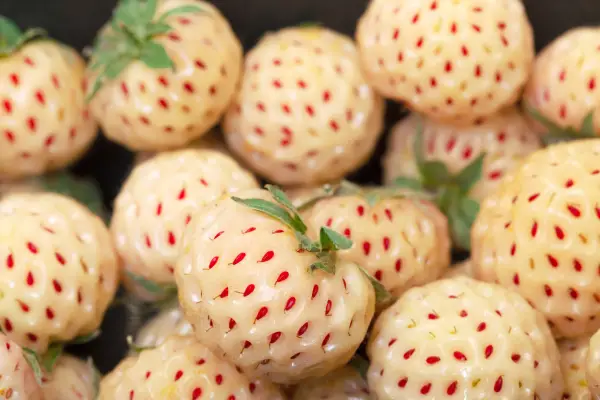
Now, let’s talk taste. Pineberries have a surprise in store for your taste buds – a lovely pineapple-like flavor that’ll leave you craving for more. And while they may be smaller in size compared to the usual strawberries, they pack a whole lot of deliciousness into their tiny frames, measuring between 15 and 23 mm (that’s 0.6 to 0.9 inches, if you prefer).
It’s like having a bite-sized pineapple-strawberry party in your mouth! So, if you’re looking for a fruity adventure that’s both unique and delicious, give pineberries a try. Trust me, they won’t disappoint!
Planting and Growing Conditions
Strawberries are very specific about where they are going to put down their roots. So, a key factor to keep in mind is that you must provide them with an ideal environment where they can flourish to their fullest potential.
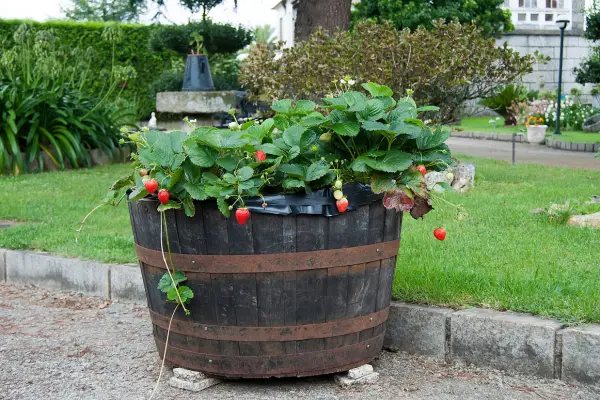
Now the question that may arise is, what kind of planting and growing conditions do they prefer?
Well, they like well-drained soil, which is highly rich in organic matter. So make sure to provide them with proper soil conditions, including a good drainage system and essential nutrients.
Plus, strawberries also need full sun exposures for at least 6-7 hours a day to have proper growth and development. Therefore, try to position them in a location where they can get ample access to broad sunlight.
Fertilization and Nutrient Management
Strawberries, like any other living organisms, need a properly balanced diet for healthy growth. Similarly, providing them with the right nutrients at the right time is the ultimate key to maximizing their yield level.
So, before the planting, make sure to amend the soil with organic matter or compost as much as possible. Doing so will play a large role in improving fruit production.
During the growing season, a perfect mixture of organic and synthetic fertilizers will work like magic in supplying the essential nutrients.
Recommended Fertilizer for Strawberries
From nitrogen to potassium and micronutrients like iron, magnesium, and zinc – nothing should be left out. After all, they are the key players that will ensure you can grow an abundant batch of well-nourished strawberries.
Always follow the recommended dosage and timing for fertilization as stated unless you want to hurt your precious plants by either overfeeding or underfeeding them.
Irrigation and Watering Practices
Is there any living organism that can live without water?
The answer is No.
Strawberries are no exception. They require their fair share of water to survive. However, that doesn’t mean you should give them water whenever you feel like it.
Finding the right balance is crucial because overwatering can lead to root rot and various diseases, while underwatering can result in stunted growth and poor yield. So, it’s essential to strike the perfect balance between watering to ensure healthy and fruitful strawberry plants.
So, what’s the secret?
Well, they appreciate consistent moisture but absolutely dislike having their roots sitting in waterlogged soil. Therefore, depending on the weather and soil conditions, you can deep water them once or twice a week.
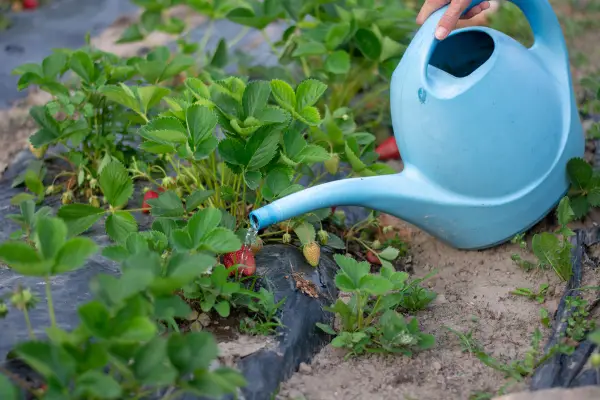
This lets the water go deeper into the soil – helping the roots to grow downward in search of moisture.
Last but not the least, mulching around the plants can play a significant impact in retaining the moisture and lessening the weed competition.
Pest and Disease Control
These little fellas are no strangers to various pests and diseases. In fact, even a slight mistake in their maintenance can be enough to ruin all your hard work and yield. So, it’s essential to be vigilant and take appropriate measures to protect them from potential threats.
From slugs to sap beetles and spider mites – there are several common pests that can greatly harm these plants if not taken care of.
In order to keep them at bay, it’s crucial that you stay one step ahead of them and thus implement the right pest management strategy.
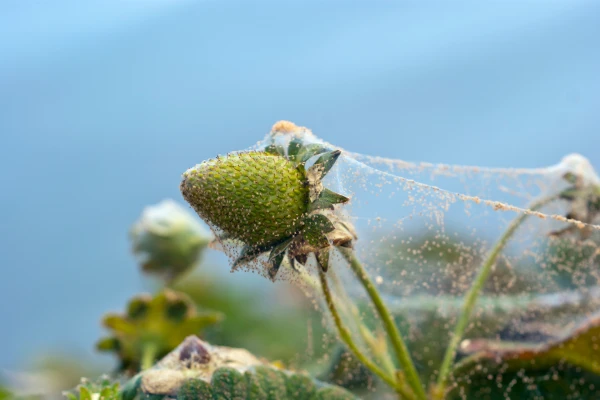
This can involve anything ranging from removing weeds and debris to using organic or chemical pest control methods whenever needed.
Plus, regular monitoring of the plants can go a long way in detecting any signs of trouble early on. This also gives you the opportunity to take the necessary actions before things get out of hand.
Pruning and Training Techniques
Pruning is basically removing the old leaves and runners from the plants. Doing so will help improve the air circulation of the plants, along with preventing the spread of diseases.
Additionally, it will even encourage the plants to put their energy mostly into the production of plumpy and juicy fruits instead of vegetative growth.
You can also employ techniques like straw mulching to keep the strawberry runners off the ground. This helps reduce the risk of rotten fruits and makes harvesting a lot easier than before.
Estimating Strawberry Yield per Plant
Estimating the strawberry yield per plant involves exploring various factors and methods. There’s a lot to discover in this fascinating process!
Determining Factors for Yield Variation
Mother Nature can be delightfully unpredictable, and numerous factors come into play that significantly influences the yield variation.
Warm and sunny weather conditions can lead to a bountiful strawberry production, while excessive rain or heat may result in poorer yields. Additionally, different varieties exhibit varying growth habits, sizes, and production potentials, all of which ultimately affect the overall yield per plant.
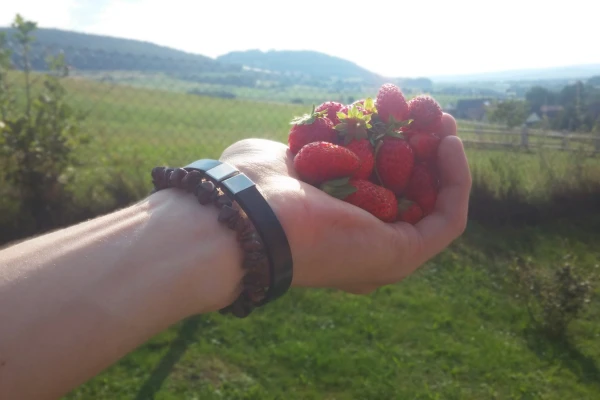
Methods for Estimating Yield
Estimating the yield of strawberries per plant doesn’t follow an exact formula or science. However, there are proven methods that can help us arrive at an estimation.
One effective method is to count the number of flowers on each plant. Since strawberries typically yield one fruit per flower, a higher flower count indicates a good potential yield.
However, one thing to note here is that not all flowers will turn into fruits, as there will naturally be several drop-offs, pollination issues, and other factors.
Another effective method is to monitor the number of fruit clusters on the plants. These clusters typically contain multiple flowers within them, so a higher number of clusters tends to indicate a higher yield potential.
Factors to Consider in Yield Estimation
The yield of younger plants is typically lower compared to mature ones. Additionally, spacing between the plants is crucial, as overcrowding can lead to constant competition for resources among them, resulting in a lower yield.
Another vital factor is pollination. Strawberry plants require effective pollination for each fruit set. The presence of pollinators and favorable weather conditions during the blooming phase greatly impact their overall production rate.
Average Strawberry Yield per Plant
Have you ever wondered “how many strawberries yield per plant, on average?”. If you have, this particular section is exactly what you need.
Typical Range of Strawberry Yield per Plant
On average, a single strawberry plant can have a yield anywhere from 150 to 400 grams of juicy berries. However, then again, this estimation can greatly vary, based on several factors.
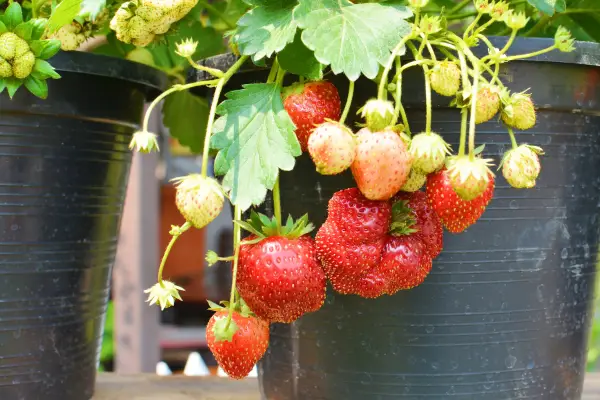
Factors Influencing Yield Variability
Nature has its own way of influencing the overall yield of strawberry plants. For instance, some varieties are naturally so productive that having just a few of them in your garden can result in a good yield. On the other hand, some species may have a low yield without any specific reasons.
The weather also plays a crucial role in strawberry yield. A sunny and mild growing season with the right amount of rainfall can lead to an abundant harvest that you can’t even imagine. However, excessive rainfall can have a negative impact on overall production. It’s essential to keep an eye on the weather conditions to optimize your strawberry yield.
Examples of Yield Estimates
According to strawberry growers worldwide, most farmers estimate an average yield ranging from 1 to 3 kilograms per plant throughout the entire growing season.
For example, under ideal conditions, a single June-bearing strawberry plant can yield about 1-2 pounds per season. On the other hand, Everbearing varieties might produce smaller but more consistent harvests throughout the entire growing season, ranging from approximately 0.5 to 1 pound per plant.
However, it’s important to keep in mind that these estimations can vary as well, based on several factors and conditions.
Maximizing Strawberry Yield per Plant
Who doesn’t love getting some extra yields? After all, the more you can harvest, the more satisfying the results feel!
Here’s how:
Best Practices for Planting and Maintenance
Achieving a maximum yield starts with a strong start, which is extremely crucial. Planting in the right way and providing proper maintenance can make all the difference in the success of your strawberry harvest.
How to do it?
To get started, simply select a healthy and disease-free strawberry plant from a reputable nursery. When planting, ensure there is enough space to allow for good air circulation and avoid overcrowding, which can be detrimental to their growth.
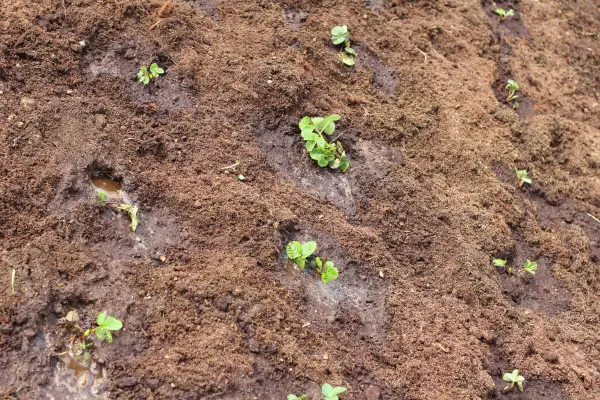
Believe it or not, these things are enough to reduce the risk of diseases and significantly increase fruit development.
Taking care of the soil is also essential. Ensure it is well-drained, rich in organic matter, and slightly acidic – as strawberries thrive in these types of soil conditions.
Lastly, regular maintenance and mulching can go a long way in ensuring a higher yield.
Techniques for Increasing Fruit Production
To increase the fruit production of your strawberry plant, make sure to promote proper pollination, which will extend the fruiting season.
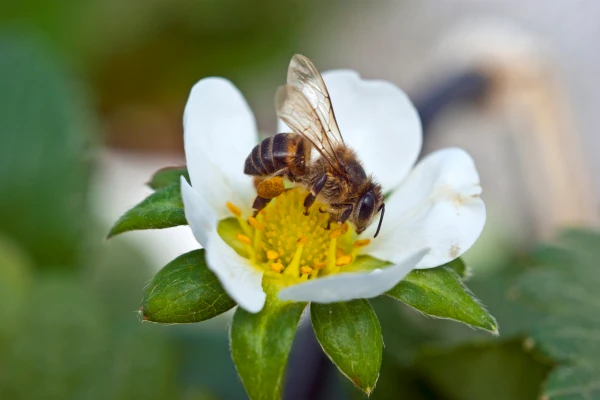
Hand pollination can be quite beneficial, particularly if you notice a lack of pollinators in your garden. To do this, gently move the pollen from the stamen to the pistil using a small brush or cotton swab. This helps facilitate pollination and improves the chances of fruit set.
Another method is removing the runners. By doing so, the long stems of the plants can spread and reproduce. The reason for this is that runners can divert energy away from fruit production, so removing them can lead to a more abundant yield of strawberries.
Nutrient Management for Higher Yields
This part is the ultimate key to maximizing your strawberry yield. So, before going ahead with the planting process, make sure to conduct a soil test to find out the nutrient composition and pH levels.
And then, depending on the results, fix the soil with organic matter as needed. For instance, to enhance fertility, you can use compost or well-rotted manure.
Also, during the growing season, strawberries have a higher nutrient demand. Hence, make sure to apply a balanced fertilizer formulated specifically for these plants.
As a rule, always stick to the recommended dosage. Even a slight increase or decrease in the amount can be enough to negatively impact your strawberry plants, which is something you definitely wouldn’t want!
Regularly monitor the plants for any signs of nutrient deficiencies, such as yellow leaves or stunted growth. By doing so, you can adjust the fertilizer accordingly, ensuring optimal plant health and growth. This proactive approach will help you maintain the best possible conditions for your strawberry plants.
Harvesting and Post-Harvest Handling
From gentle handling techniques to smart storage practices – make sure each of your treasures stays at their best form by following the below methods:
Proper Harvesting Techniques
For a successful harvest, always remember that timing is everything. Harvesting at the right time ensures you get the maximum flavor, nutrition, and the best quality possible. Therefore, observe the maturity of the crop, including factors like color, texture, size, and more, to determine the perfect moment for picking your delicious strawberries.
For instance, look for strawberries that have a lively red color all the way down to their tips. Why, you ask? This generally means that they have reached their peak level of sweetness and are at their most delicious stage for picking.
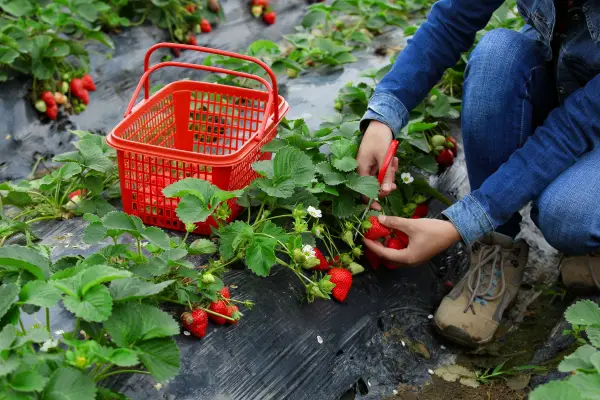
So, gently grasp the stem just above the fruit and pull it off in a moderate twisting motion – making sure not to squeeze these little beauties.
In case you have plenty of them to harvest, it’s best to use a small, sharp knife or shear for cutting the stem about half an inch above the fruit. This will maintain the plant’s integrity along with avoiding any unwanted damage.
Handling and Storage Practices
Time to take care of your precious berries!
First and foremost, start by sorting through the strawberries and remove any damaged or overripe ones. Even having one or two of these rotten ones can quickly spoil the rest of the batch, so it’s essential to remove them promptly.
Avoid washing the strawberries until you are ready to eat or use them. Washing them too early can result in excessive moisture, which can lead to the growth of mold.
To store the unwashed fruits, place them in a shallow container lined with paper towels to absorb any excess moisture. Afterward, store the strawberries in a refrigerator in a single layer to prevent crushing. This storage method will help keep your strawberries fresh and in the best condition for longer.
We all know how delicate strawberries can be, so try to be gentle with them as much as possible. In case you are planning to store for a long time, go for the freezing method. Just remove the stems, wash them, and dry them off thoroughly.
Lastly, put them in an airtight container or a freezer bag. The frozen berries are pretty good for smoothies, jams, or any baking items. One point to note here is the sooner you use the harvested berries, the better they are going to taste. So, try to have them as soon as possible.
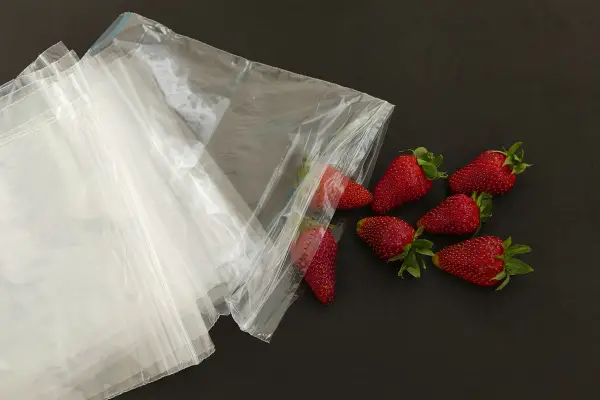
Case Studies and Research Findings
Check out the recent findings and successful cultivation strategies to maximize your strawberries yield per plant:
Studies on Strawberry Yield per Plant
Several studies have been conducted by researchers to find out how to boost the yield of strawberries per plant.
The first and foremost finding from researchers’ studies is that these plants need plenty of sunlight to produce juicy and abundant berries.
Another crucial factor to consider is soil nutrition. Providing the plants with a perfect mixture of nitrogen, phosphorus, and other essential nutrients will undoubtedly increase the overall yield.
Successful Strategies for Maximizing Yields
Two of the most popular and successful strategies for maximizing yields are vertical gardening and advanced irrigation techniques.
Vertical gardening refers to growing berries in stacked layers. By doing so, the farmers can make the most use of the limited space while producing a greater amount of strawberry yields.
Our Recommended Vertical Gardening Product

Next up, let’s talk about advanced irrigation techniques. These methods are real game-changers when it comes to maximizing yields. Various research has even confirmed their effectiveness. So, what should you do? Let’s explore these techniques and how they can boost your strawberry harvest!
Well, advanced irrigation techniques involve providing the strawberry plants with a consistent and reliable water supply system. By doing so, you can ensure they avoid the stress of drought and have access to adequate moisture throughout their growing period. Keeping a close check on the moisture levels is essential to maintain optimal hydration for the plants. In return, you’ll be rewarded with the most impressive yield of strawberries you’ve ever seen. These techniques are all about maximizing water efficiency and ensuring your plants receive the right amount of hydration when they need it the most. So, get ready to witness a bountiful harvest of juicy, delicious strawberries!
For Further Reading
- All You Need to Know about How to Plant Bare Root Strawberries
- How to Grow Strawberries Indoors
- How to Grow Strawberries in Grow Bags
- Hydroponic Strawberries
- When to Enjoy Fresh Rhubarb: A Guide to Rhubarb Season
- Blueberry Companion Plants
FAQ
Of course, you can. All you have to do is pick the right container size and take a little extra care of them. And at the end of the day, wait for the magic to happen – a high yield per plant.
Avoiding rough handling, storing in a cool place, and not washing them until they are all ready to eat or use are some of the post-harvest handling practices to maximize the shelf life of your strawberries.
Fighting off pests, managing nutrient levels, and pollination issues are some common challenges that may affect the strawberry yield. However, with the right pest control, nutrients, and resorting to hand pollination – you can solve these issues to a great extent.
Definitely! One such effective technique is removing the runners or side shoots. By doing so, you can redirect the plant’s entire focus to fruit production – ultimately resulting in larger and more abundant strawberries, much to your delight!
Overcrowding the plants, completely ignoring watering and fertilization, pest controls, and early signs of various diseases are some of the common mistakes to avoid at all costs unless you want a poor strawberry yield.
Final Thoughts on How Many Strawberries per Plant
Having a strawberry garden is truly a rewarding experience. But knowing how many strawberries each plant can produce each year adds an extra layer of excitement that is unparalleled.
Now that you have the answer to this question, as well as valuable insights on how to grow, maximize, and harvest these delightful fruits, it’s the perfect time to create your own strawberry haven. So, roll up your sleeves, get planting, and witness the magic of these juicy delights flourishing in your garden. Happy planting!

Darrell has a passion for gardening that he inherited from his father. Go here to read more about the influence his father played in his love for gardening. If you want to send Darrell a quick message, then visit his contact page here.

![How to Water Indoor Plants [Plant Care 101]](https://wraxly.com/wp-content/uploads/2021/03/How-to-Water-Indoor-Plants-Plant-Care-101-1200-1024x576.webp)

![Growing Plants from Cuttings [A Simple Guide]](https://wraxly.com/wp-content/uploads/2021/03/Growing-Plants-from-Cuttings-A-Simple-Guide-1200-1024x576.webp)